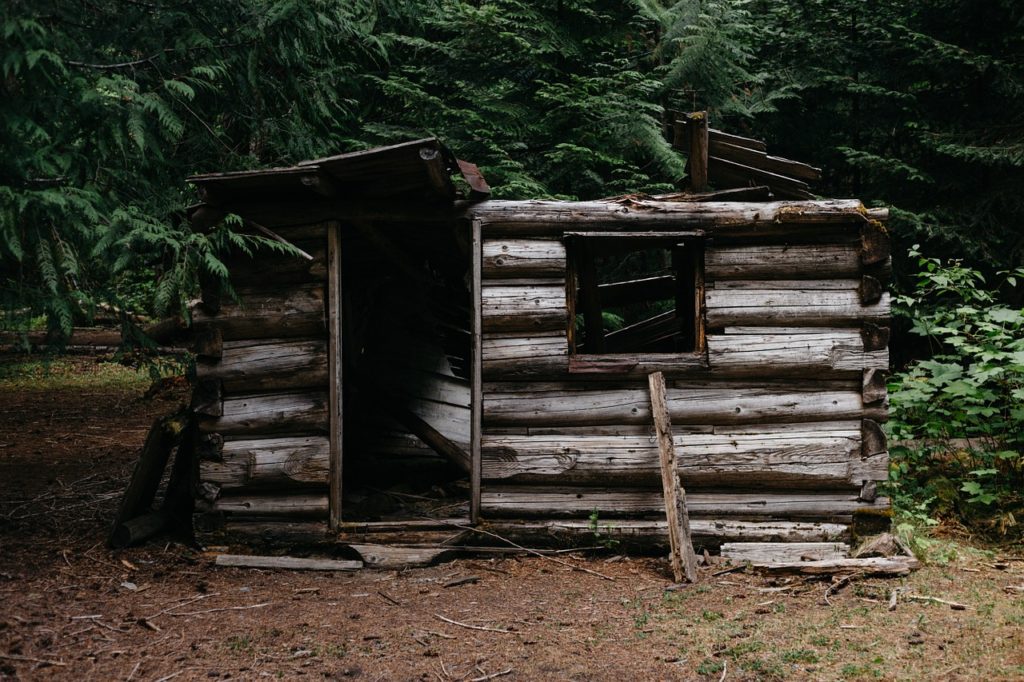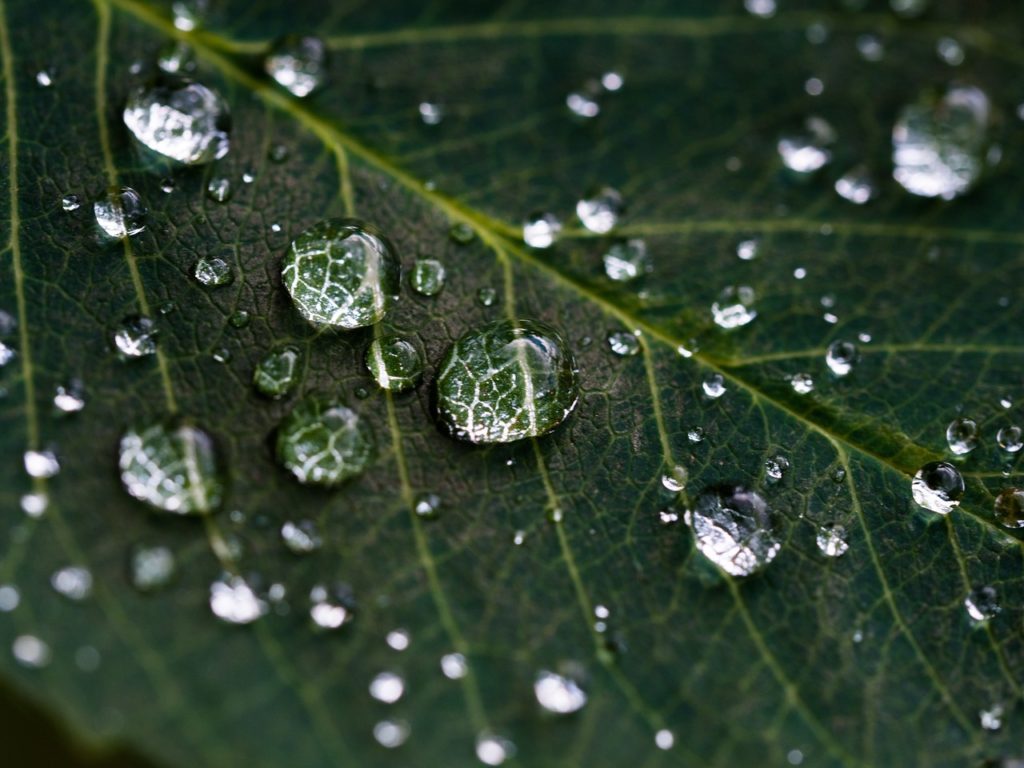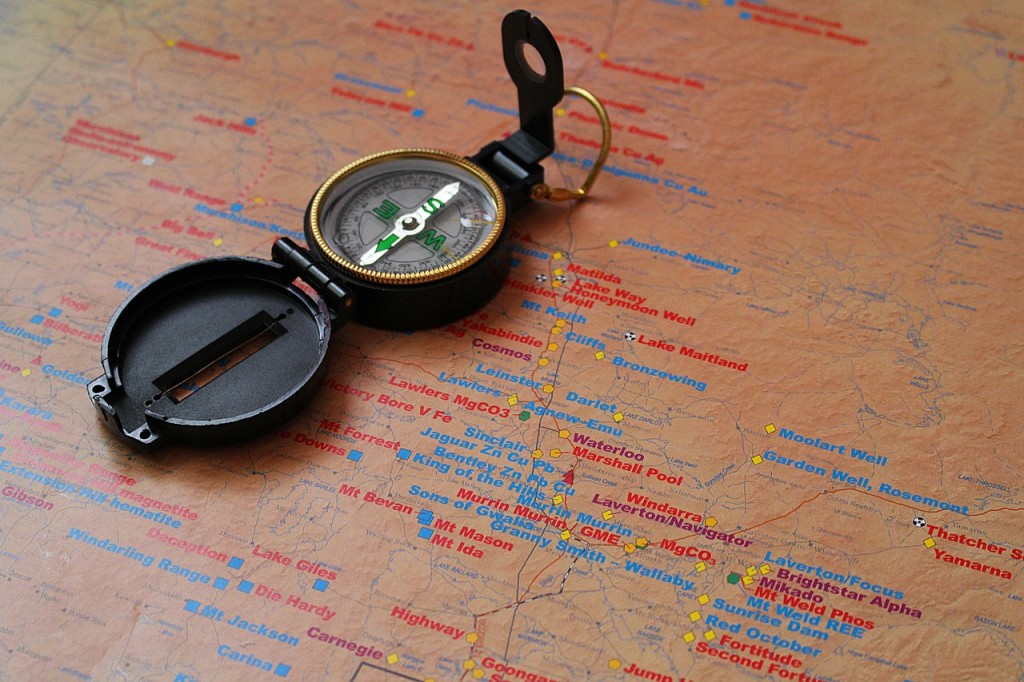Survival Skill #1: How to Set up a Suitable Campsite
The foundation of your outdoor survival skillset should be pegged on the best way you can stay high and dry. It’s imperative to avoid paths and valleys where water could unexpectedly flow towards your tent, possibly even in the dead of the night.
Secondly, choose a location clear of natural dangers such as dangerously hanging branches (“widowmakers”) or insect nests.
Apart from that, make sure you set up refuge in a place close to clean running water, a rocky wall (if possible), and plenty of dry wood. These can be used to build a fire or assemble your tent.

A Cabin in the Woods
Survival Skill #2: Know How To Build a Warm Shelter Quickly and Effectively
Never underestimate the impact that cold weather can have on your health. Hypothermia and pneumonia are the two biggest outdoor killers especially during the wintry months. Forget about protecting yourself from coyotes or hyenas. If you can’t erect a well-insulated shelter, the cold will gnaw your bones before the animals do.
A good place to start is by insulating your body from the cold ground by laying down a layer of debris (moss, leaves, etc.) instead of sleeping on the bare ground. Angle a thick layer of leaves and moss against your tent walls to reduce the loss of heat even further.
Survival Skill #3: Using a Makeshift Multi-pronged Spear
Gigging — also known as hunting with a makeshift multi-pronged spear — is one of the easiest ways of snagging fast-moving critters be they fish or snakes. And this is based on the idea that it is easier to catch dinner this way than when using a single sharp spear point.
Survival Skill #4: Sparking a Fire With a Battery
There are various ingenious ways of starting fire effortlessly — even without your kitchen matchsticks. One of them is by using your phone’s battery. Simply short circuit (connect the positive and negative terminals directly) the cell with a wire or piece of aluminum foil to create a spark that will ignite your tinder bundle.
Survival Skill #5: The Basics of Building a Fire
Now that you’ve sparked your fire, your next assignment should be how to build it to a larger scale. Here you can use cotton balls covered in lip balm or vaseline as an accelerant.
But that’s not always enough. Arrange your twigs in a characteristic upside-down V shape to allow oxygen to easily feed the flames. Add dry firewood in controlled amounts to keep the fire burning.

Survival Skill #6: Collecting Clean Water
Rain, dew, and snow are among the best sources of clean and readily potable water. You can also tap out the water found in water vines, thistles, cacti, or maple trees. This type of water is typically ready to drink and you won’t need to purify it.
Anything else — including downstream and pond water — should always be boiled first to kill any germs or dangerous pathogens. Additionally, anyone with above average outdoor survival skills knows that collecting water from transpiring plants is one of the easiest methods of water collection.
Survival Skill #7: Identifying Edible and Inedible Plants
Instead of wasting too much energy hunting big game, smart survivalists know they stand a better chance collecting edible plants as well as small edible insects and animals (frogs, lizards, and fish).
There are quite a few edible herbs in the woods; a good example is wild spinaches also known as lamb squatter and dandelions. However, some are toxic and can kill you in a matter of hours. Do not take chances if you are uncertain in any way.
Survival Skill #8: Learn How to Tie a Decent Bowline Knot
Learning to tie a proper bowline knot is an invaluable skill in a variety of survival situations. In the wilderness, it will be your go-to foolproof rescue knot, perfect for tying snares, lowering equipment, securing shelters, or even yourself when descending down a cliff. Here’s how:
Survival Skill #9: Mastering Navigation
You don’t need your iPhone’s GPS to make it through the wild. Instead, during the day, you can use the sun to find your bearing. You can find your true north and now use your watch as a magnetic compass!
It is even easier at night. Find the North Star/Polaris and draw an imaginary line between it and the Big Dipper. Extend it to the Little Dipper’s handle. This should give you a rough bearing of true north from which you can determine the direction to follow.
For a great place to start, check out Wilderness Navigation: Finding Your Way Using Map, Compass, Altimeter & GPS.

Survival Skill #10: Sending Out Distress Search and Rescue Signals
You may find yourself stranded, lost, severely injured, or incapacitated to the point where your only hope of survival would be a search and rescue team spotting you. One of the best ways of helping them find you easily is by maximizing your visibility.
Do this either by lighting a signal fire to produce pillows of thick smoke or use a mirror signal. You don’t need a store mirror to send distress signals to your target. Simply improvise any reflective surface be it your cell phone or vehicle’s headlights. In both cases, make sure you’re in an openly visible place such as a hilltop or clearing.
Master all of these skills and more with Bushcraft 101: A Field Guide to the Art of Wilderness Survival.